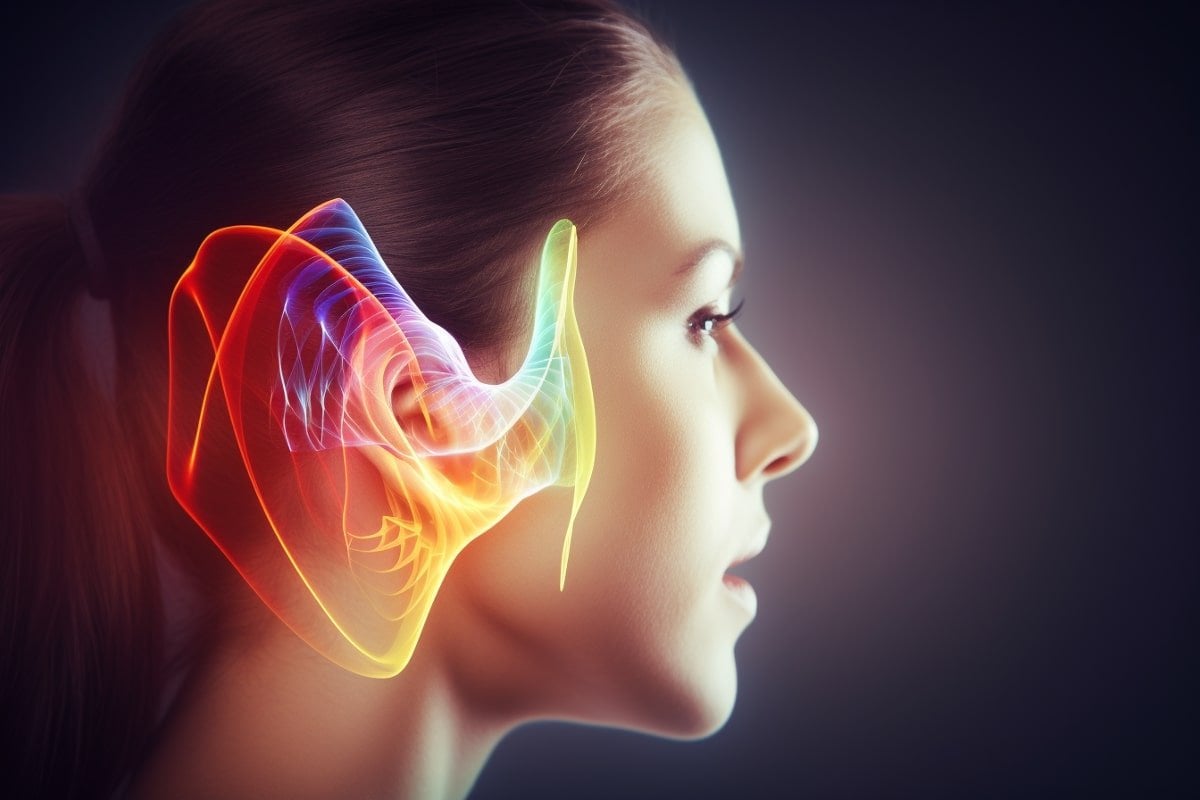Summary: A new study sheds light on the role of a long-puzzling cochlear signal, indicating it could inform the brain about the ear’s health status.
This research provides important insights into understanding the mechanisms of noise-induced hearing damage. The DC signal, identified around 70 years ago, changes polarity when the ear is exposed to harmful noise, indicating potential damage.
This finding could contribute to future diagnostic tools for noise-induced hearing loss.
Key Facts:
- The DC signal in the ear, a long-standing mystery, likely informs the brain about the ear’s functioning state.
- Changes in the DC signal polarity occur when the ear is exposed to harmful noise, indicating potential hearing damage.
- The study reveals that the DC signal is created by the release of potassium ions through hair cell membranes.
Source: Linkoping University
A cochlear signal, the exact role of which has been unclear since its discovery around 70 years ago, probably gives the brain information on whether the ear is functioning normally or not.
This is the conclusion of a study from Linköping University, Sweden. Its findings are an important piece of the puzzle in explaining what happens in the ear in hearing impairment caused by harmful noise, and may in the long run contribute to diagnosing noise-induced hearing injury.
When the ear is exposed to loud sounds, as at a concert or when being in a noisy environment, hearing can be temporarily impaired. Being repeatedly exposed to loud sounds may cause permanent damage to hearing.

There is research to indicate that more than one billion young people are at risk of damaging their hearing by listening to loud music with headphones and at venues. But although noise damage is a major cause of impaired hearing, the exact mechanisms are largely unclear.
Pierre Hakizimana at Linköping University is one of the researchers aiming to find out how these damages occur and whether they can be prevented.
The inner ear, or cochlea, has around 15,000 hair cells. When hit by sound waves, the hair cells transform the vibrations to electric nerve signals. These signals are led to the brain, which interprets them, and not until then can we hear the sound. The hair cell signal consists of two parts, called AC and DC.
The AC signal is well researched. It gives the brain information on sound loudness and frequency, i.e. how high or low pitched the sound is. But the DC signal has remained something of a mystery. Ever since its discovery some 70 years ago, researchers have been wondering what its function could be.
When measuring the electrical signals from the cochlea hair cells, the DC signal is noticeable as it causes a slight shift in the AC signal in either a positive or a negative direction. Various studies trying to characterise the DC signal have come to different conclusions as to its polarity.
In the current study, Pierre Hakizimana shows that DC signal polarity changes from positive to negative when the cochlea has been exposed to harmful noise. In other words, the signal can provide an indication of ear health status.
“It seems like this signal could be a way for the body to inform the brain whether the ear is healthy or not, and in that way facilitate the brain’s ability to decode faint sounds. The brain can amplify a weak signal from the cochlea.
“If informed that the ear isn’t functioning normally, the brain doesn’t have to spend resources trying to improve the signal to decode sound from an injured ear,” says Pierre Hakizimana, principal research engineer in the Department of Biomedical and Clinical Sciences at Linköping University.
This discovery may hopefully contribute to new research on how the DC signal could be used to diagnose hearing loss caused by harmful noise. This has so far not been solved, as it has not been known how to interpret this signal, or how to reliably isolate and measure it in humans.
In his study, Pierre Hakizimana also shows that the DC signal is created by potassium ion channels releasing potassium ions through hair cell membranes.
Funding: The research was funded by Stiftelsen Tysta Skolan.
About this auditory neuroscience research news
Author: Karin Söderlund Leifler
Source: Linkoping University
Contact: Karin Söderlund Leifler – Linkoping University
Image: The image is credited to Neuroscience News
Original Research: Open access.
“The summating potential polarity encodes the ear health condition” by Pierre Hakizimana. Cellular and Molecular Life Sciences
Abstract
The summating potential polarity encodes the ear health condition
The summating potential (SP), the DC potential which, along with the AC response, is produced when the hair cells convert the vibrational mechanical energy of sound into electrical signals, is the most enigmatic of the cochlear potentials because its polarity and function have remained elusive for more than seven decades.
Despite the tremendous socioeconomic consequences of noise-induced hearing loss and the profound physiological importance of understanding how loud noise exposure impairs the hair cell receptor activation, the relationship between the SP and noise-induced hearing impairment remains poorly characterized.
Here, I show that in normally hearing ears, the SP polarity is positive and its amplitude relative to the AC response grows exponentially across frequencies, and becomes negative and decreases exponentially across frequencies following noise-induced hearing injury.
Since the SP is thought to be generated by K+ outflow down the gradient through the hair cell basolateral K+ channels, the SP polarity switch to negative values is consistent with a noise-induced shift in the operating point of the hair cells.






